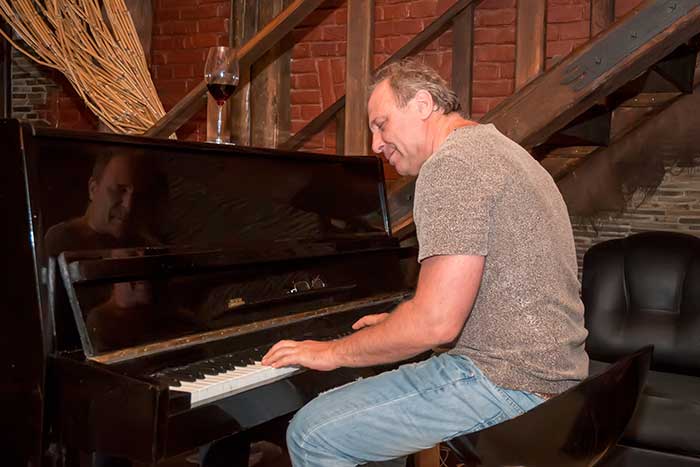A guide to help you in your first steps of your piano playing journey!
When you’re starting out with the piano, there are some basics that everyone needs to know. Here are some of the most important things, including a glossary of key terms, and some basic techniques.
Questions that you may have:
First, let’s tackle two of the most basic questions you might have when starting piano lessons:
What is a scale?
Scales are a succession of notes played one after another. The two most common scales are the major and the minor. In most cases, as in the major and minor scales, scales consist of seven notes, but some can vary in length. A scale helps to determine the key of any given piece.
What is a chord?
At its most basic, a chord is a set of notes you play at the same time. Most standard chords have three notes. You can build chords by playing every other note of a scale.
Which book would you recommend for an absolute beginner?
We’ve grown really fond of Carol Barratt’s “The classic piano course”.
Carol Barratt is an excellent author and she has compiled the ultimate starters piano book. (In our opinion).
You can find more details of her book here.
Which digital piano do you recommend?
We’ve compiled a few lists.
You can select between three quality digital pianos here.
Alternatively, if you are only starting out take a look at our recommended digital pianos with stools here.
Ten Key Terms
When you start playing the piano, there are some phrases that you will often read and that your teacher will probably say a lot. Some of them you may have heard before. Here are ten of the most common and what they mean:
Allegro – Play quickly
Moderato – Play at medium tempo
Andante – Play medium slowly
Largo – Play very slowly
Staccato – Play short and sharp
Legato – Play smooth and connectedly
Piano – Play softly
Forte – Play loudly
Crescendo – Gradually increase sound
Decrescendo – Gradually decrease sound
The Basics
Piano posture
Throughout your life you’ve probably heard many people talk about proper posture and what’s good for you, and in piano you definitely need to learn the correct posture to play with the best technique from the outset.
You should sit close to the front of the piano stool, with feet firmly on the floor. When you’re playing your elbows should be slightly in front of you – if they’re at your side then your stool is too close to the piano! You should always remember to sit tall, but loosen your arms and shoulders. Your sitting position should feel natural and not forced.
Finger numbers
The finger numbers for playing the piano are incredibly simple, and once you learn them remembering them is likely to be a doddle. They go as follows:
- Finger #1: Thumb
- Finger #2: Index finger
- Finger #3: Middle finger
- Finger #4: Ring finger
- Finger #5: Little finger
Hand positions
When you first learn to play, your little finger and thumb will tend to naturally play flat. However, if you learn to keep them tall (with the exception of the thumb of course!) early on your technique will be much stronger as you go through the learning process. You should learn to play with firm fingers but loose arms and shoulders at all times!
As you get more advanced, many different hand positions will apply depending upon the sound you want to produce. Celine Gaurier-Joubert our master instructor will definitely be able to help you to develop a formidable sound on the piano!
Here at the London Piano Institute, lessons are taught by professional and experienced pianists – so you’ll learn the right techniques from day one! To book your lessons – get in touch today!







